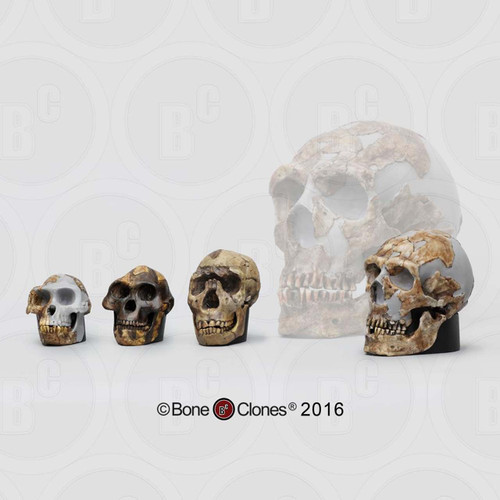Homo neanderthalensis, half scale skull
Whether you call Homo neanderthalensis (H. sapiens neanderthalensis is also used), a Neanderthal or a Neandertal (both spellings exist), you are describing a group of ancient people who lived in Europe and the Near East around 120,000 to 30,000 years ago.
The name comes from the Neander Valley in Germany where the first specimen was found and is properly pronounced in German with a hard T regardless of which spelling you prefer.
Neanderthals lived during the period known as the Middle Paleolithic.
Their technology was more advanced than earlier cultures and they were able to work stone tools into various sophisticated forms.
Interestingly, there is very little evidence of bone tool fabrication even though Neanderthals were evidently very successful hunters.
Neanderthal skulls show great variation, but the classic Neanderthal had a large, long head with a bigger brain than modern man.
Prominent brow ridges and a projecting face were common.
Why the Neanderthals disappeared is not known.
Notes:
- Half scale in three dimensions equates to one eighth scale in volume so models may appear smaller than expected
- This model may also be purchased as part of a set of seven half-scale skulls
- There are two full-size H. neanderthalensis skull models available: La Ferassie 1 and La Chapelle aux Saints







